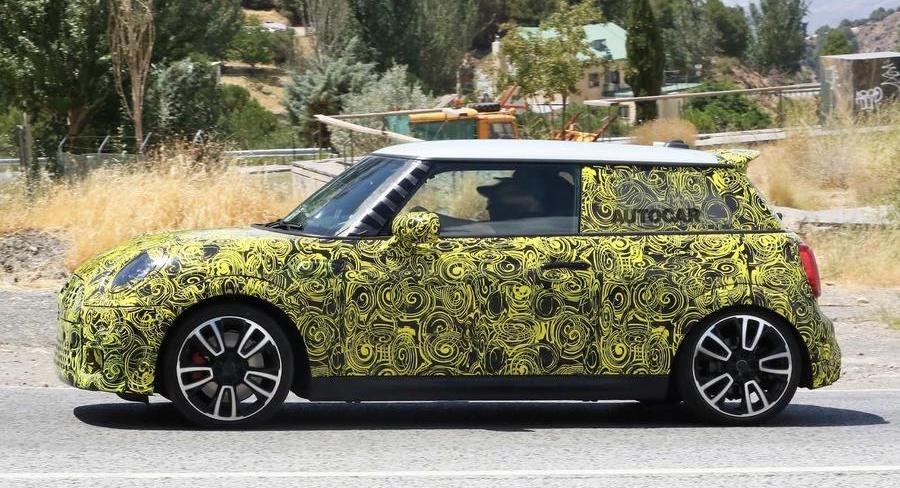Mini hatchback prepares for fourth and final petrol outing

Mini is readying a heavily refreshed version of its combustion-engined Mini Hatchback before it bows out once and for all, as the marque pushes forward to become an all-EV brand by the early 2030s.
New spy shots have emerged of a prototype Hatch testing in heavy camouflage, giving clues as to how Mini will update the current three-door in line with its newer electrified models. The fourth-generation Fiat 500 rival will arrive more than a decade after the current car – which has undergone two facelifts – went on sale.
The new petrol-engined hatchback will be sold alongside a visually similar (but mechanically unrelated) electric version built in China launching next year. Mini's final combustion-engined car, launching in 2025, is expected to be the next-generation convertible, which will be based on the hatchback testing here but is not yet confirmed to share a production line.
This prototype looks to be the successor to today's warmed-up Mini JCW, given the sporty large-diameter alloy wheels, prominent front air intakes, meaty brake set-up and purposeful rear diffuser.
Design changes are subtle - enough to mark it out from the current car while maintaining some differentiation from the more rounded, Chinese-built EV.
The front overhang looks to have been shortened slightly – in line with Mini design chief Oliver Heilmer's ambition to recapture some of the original Mini's compact proportions – and the bumpers and light designs have been reshaped, but otherwise the Mk4 BMW Mini looks to be one of the most subtle evolutions yet.
Other styling tweaks visible at this early stage include wing mirror-mounted indicators and a more prominent fuel flap - and while the front grille has been covered here, no doubt Mini will reshape the hatch's face to better match its incoming EV models.
The interior is likely to be more drastically reinvented in step with Mini's minimalistic push. Expect the petrol hatch to take the lead from the company's recent Strip and Aceman concepts in gaining a prominent central touchscreen where the circular speedometer used to be and ditching the vast majority of its physical controls.
But otherwise, Mini is expected to broadly offer a similar mechanical proposition, which means the performance-oriented JCW car is likely to continue with a variation of its current 2.0-litre turbocharged four-pot, which produces 228bhp and 236lb ft for a 0-62mph time of 6.1sec.
A recent update for the Ford Fiesta ST rival brought a more efficient sports exhaust and an upgraded adaptive suspension system - improvements likely to carry over into a new generation.
What is not clear, however, is whether a new generation of Mini hatchback will reintroduce the six-speed manual gearbox option. The brand made its line-up automatic only amid a backdrop of significant supply chain obstacles and has yet to indicate when a self-shifting option could return.
Other engines available in the Mini line-up are expected to be the 1.2-litre and 1.5-litre petrols currently offered.
